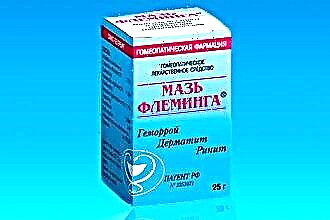Periodic lability of blood pressure, weakness, interruptions in the work of the heart, headache, redness or pallor of the skin at a young age are the hallmarks of vegetative vascular dystonia (VVD). Pathology is caused by a violation of the innervation of the vascular wall, functional circulatory disorders, which have a chronic course. Diagnosis of VSD implies long-term monitoring of the patient's condition and correction of treatment aimed at eliminating the main symptoms, depending on the form of the disease.
Which doctor should I contact with VSD?
The peculiarity of the course of the disease is due to the polymorphism of symptoms that develop due to dysfunction of the autonomic nervous system. Patients can seek medical help with VSD with a variety of complaints and objective signs.
The main clinical forms of VSD:
- by hypotonic type - characterized by a reduced tone of the arteries. Patients complain of constant weakness, diffuse pain in the head, dizziness, frequent loss of consciousness;
- by hypertensive type. The form is characterized by the lability of blood pressure, frequent rises in systolic pressure (up to 170 mm Hg). Patients complain of headache, swelling, discomfort in the region of the heart and chest;
- cardialgic is characterized by a violation of the tone of the coronary vessels, which causes periodic aching pains in the heart, a feeling of interruption in work, palpitations and other symptoms;
- mixed - a form in which the characteristics given above are combined. In addition, the innervation of blood vessels throughout the body is disrupted, therefore, frequent symptoms include abdominal pain, alternation of constipation and leakage, and nausea.
More than 90% of patients with VSD have changes in the color of the skin (pallor, redness, cyanosis), night pains in the legs, not associated with physical activity or taking medications.
A variety of clinical symptoms determines a wide range of patients' referrals to doctors. With VSD, a doctor's consultation is recommended:
- therapist - to conduct a general examination and exclude somatic pathology;
- neurologist - in order to determine the etiology of headaches, dizziness and loss of consciousness;
- infectious disease specialist - to determine the etiology of diarrhea, abdominal pain;
- a cardiologist who deals with organic lesions of the heart and large vessels, which are accompanied by unpleasant sensations behind the sternum;
- a vascular surgeon - in order to exclude organic vascular pathologies, which are accompanied by a change in the color of the integument, edema and pain in the legs (for example, with arterial obstruction).
- a psychologist - to correct the emotional lability of patients, to determine the connection between attacks and panic attacks and other stressful situations;
Vegetovascular dystonia is considered a "diagnosis of exclusion" after a confirmed absence of organic causes of the disorder.
Treatment and monitoring of the patient's condition
After establishing a clinical diagnosis, the patient is prescribed treatment depending on the clinical form and the prevailing symptoms. Since the pathology is caused by a violation of the autonomic innervation of the vascular wall, therapy is aimed at stabilizing the tone of the arterioles.
Non-drug means mean the normalization of sleep, work and rest, balanced nutrition and adequate physical activity, physiotherapy. Pharmacological methods of correction allow a person to get rid of symptoms by acting on the central nervous system.
Applied drugs:
sedatives (sedatives): Glycine, Sedavit, Novo-Passit, Valerian extract;
- anxiolytic (anti-anxiety). Atarax, Afobazol and others. The use of Atarax in VSD is due to a decrease in the level of anxiety in patients, stabilization of the emotional background and, subsequently, a decrease in the influence of the autonomic nervous system on the vessels;
- metabolic drugs - Mildronate, ATP-long, Riboxin (most often used in cardialgic and mixed versions) are aimed at improving metabolic processes in organs and tissues;
- vasodilators (drugs that expand the lumen of blood vessels) - Trental, Pentoxifylline. The action of the funds is aimed at improving blood microcirculation in organs;
- prokinetics (for example, Domrid) are used to eliminate gastroenterological signs of VSD.
Combinations of drugs, according to patient reviews, significantly improve the patient's condition.
The need to prescribe other groups of drugs is determined by the attending physician, depending on the individual tolerance and the clinical case.
After diagnosis and selection of treatment, the patient needs regular monitoring of the course of the disease. The interpretation of the symptoms of chest pain, shortness of breath, loss of consciousness as signs of VSD can cause untimely diagnosis of emergency conditions (myocardial infarction, ischemic stroke). In order to monitor the course of the disease, it is recommended:
- preventive examination by a therapist - once every 6 months, by narrow specialists - once every 1 year;
- when new symptoms appear or the condition worsens, communicate with the clinic at every change.
Conclusions
Vegetovascular dystonia refers to functional disorders that do not pose a direct threat to a person's life. The variety of clinical signs of pathology requires the consultation of many specialists to exclude organic diseases. Adequately assessed condition of the patient and the appointment of therapy can control the onset of symptoms. However, for the purpose of early diagnosis of other diseases, regular examination of patients is recommended.



